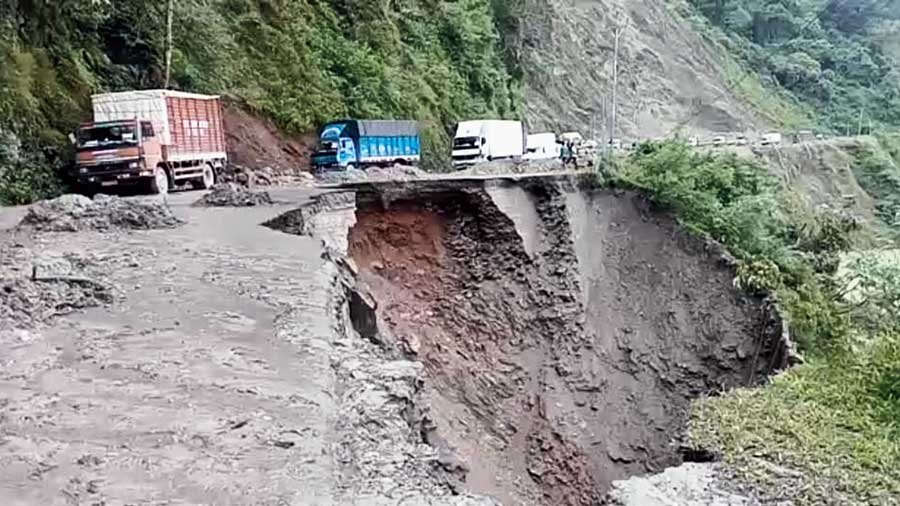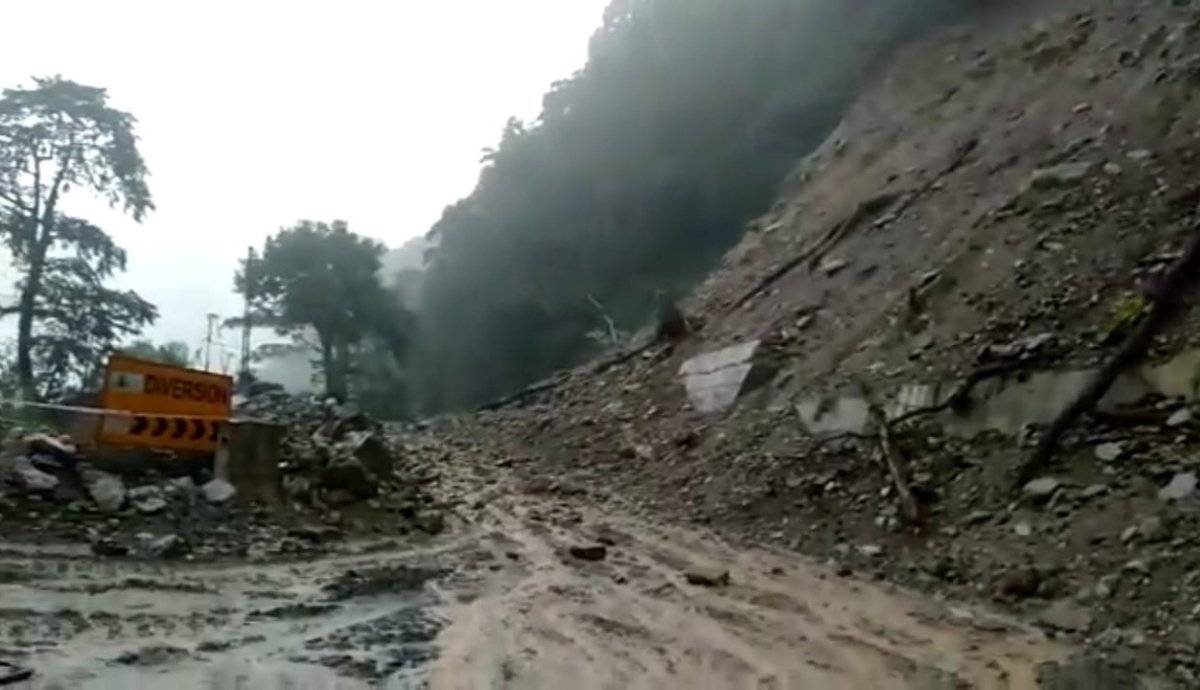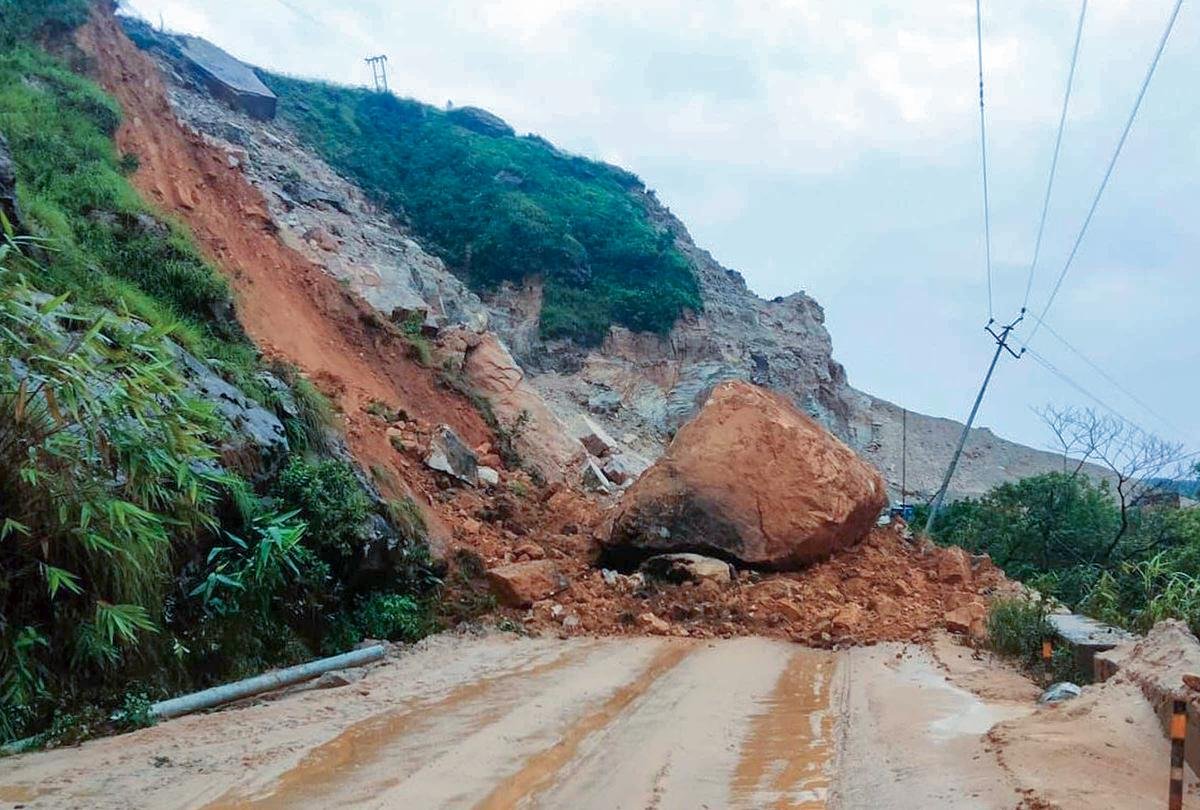Sikkim has been grappling with continuous heavy rains for the second consecutive day, resulting in flash floods and landslides across the state. These severe weather conditions have caused significant disruption, particularly affecting transportation and infrastructure.
In Singtam, flash floods have led to the blockage of National Highway 10 at Shantinagar. The incessant rain since last evening has inflicted considerable damage on roads and vehicles in the vicinity. The vital Singtam to 32 number NH-10 road is currently impassable due to heavy rain and accumulating debris. Authorities are deploying machines and working tirelessly to clear the debris and reopen the road to traffic, ensuring that connectivity is restored as swiftly as possible.
The Indian Meteorological Department (IMD) has reported that Sikkim received 101.6 mm of rain in the last 24 hours, which has contributed to roadblocks and widespread disruptions. The relentless downpour has exacerbated the situation, making rescue and repair efforts more challenging.
In Gangtok, a landslide occurred at the Panihouse area near the Shiva Mandir, further complicating the already dire circumstances. The landslide has disrupted normal life and raised concerns about the safety of residents in the affected areas.
Tragically, in the early hours of June 10, a devastating flood swept through Majuwa village in the Yangang region of South Sikkim, resulting in the loss of three lives and leaving several families homeless. The flash flood, originating from Bhaley Dhunga, caused extensive damage as it flowed through Majuwa village, destroying buildings and infrastructure. The victims identified so far are Yabha Subba and Bishal Rai, with the third deceased person’s name yet to be confirmed. This calamity was officially reported by DC Namchi Annapurna Alley, highlighting the severity of the situation.
The impact of the flash flood has been severe, not only claiming lives but also displacing many residents. Several areas around Yangang have also suffered significant damage, with the floodwaters affecting buildings, roads, and other infrastructure. The full extent of the damage is still being assessed, but it is evident that the region has been significantly impacted.
Rescue operations are currently underway, with teams working diligently to evacuate stranded individuals and provide aid to those affected. The response teams are focusing on ensuring the safety of residents and addressing immediate needs such as shelter, food, and medical assistance. The local administration, along with state and national agencies, is coordinating efforts to manage the crisis and mitigate further damage.
Efforts to clear blocked roads and restore normalcy are being prioritized. Heavy machinery is being utilized to remove debris and reopen critical routes, which is essential for facilitating the movement of rescue and relief teams. Despite the challenging conditions, the authorities are determined to restore access and provide necessary support to the affected populations.
The continuous heavy rains have not only caused physical damage but also raised concerns about the potential for further landslides and floods. Residents are being advised to remain vigilant and adhere to safety guidelines issued by authorities. The focus is on preventing further casualties and minimizing damage as much as possible.
The situation in Sikkim remains precarious, with the weather forecast indicating more rain in the coming days. This ongoing weather pattern poses additional challenges for the rescue and relief efforts. Authorities are closely monitoring the situation and preparing for any eventualities to ensure the safety and well-being of the residents.
In conclusion, Sikkim is facing a severe weather crisis with continuous heavy rains triggering landslides and flash floods, causing extensive damage and disrupting life across the state. The blockage of National Highway 10 at Shantinagar and the devastation in Majuwa village highlight the urgency and scale of the crisis. Rescue and relief efforts are in full swing, aiming to provide immediate assistance and restore normalcy. The resilience and coordinated efforts of the authorities and communities will be crucial in overcoming this challenging period.







